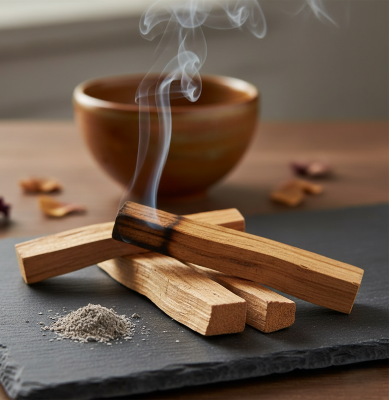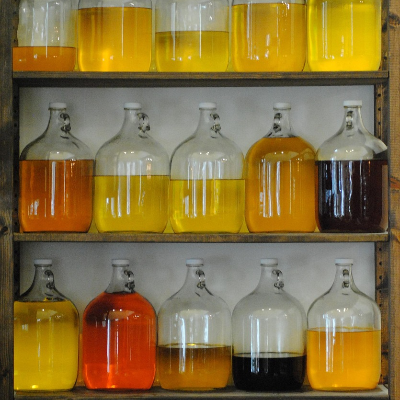Thực đơn
-
-
Câu hỏi thường gặp
- Cách nhận biết dăm trầm hương thật, tự nhiên hay trồng trọt
- Cách nhận biết hạt trầm hương giả phun/hấp dầu
- Làm thế nào để biết có nhiều hơn một loại dầu trong dầu của bạn
- Cách làm cho vòng tay bằng gỗ hoặc mala của bạn tối màu hơn
- Làm thế nào để nhận biết hạt Trầm hương có chìm mà KHÔNG chìm trong nước?
- Hương ngược hoạt động như thế nào và bạn đốt nó như thế nào?
- Bắt đầu từ đâu nếu bạn không biết trầm hương là gì?
- Tại sao bạn lại mất tiền nếu mua hạt giống và cây trồng?
- Nên chọn loại trầm hương nào?
- Các câu hỏi thường gặp
- Các bài viết liên quan đến trầm hương
- Đang chuyển hàng
-
CỬA HÀNG - Trầm hương
-
SHOP - Gỗ Thơm Khác
-
SHOP - Đế và Lư Hương
-
- Hướng dẫn sử dụng dầu Oud MIỄN PHÍ
- Lời chứng thực
- "Tại sao bạn lại mua cái này?"
- Liên hệ chúng tôi
- Về chúng tôi
- +61430284329
- Đăng nhập
-
Tiếng Việt


The Best Wood Incense for Purifying Your Space and Elevating Your Mind
Tháng 9 24, 2025 8 đọc tối thiểu
1. From Fire to Fragrance
For many centuries and across various continents, humans have burned wood not just for heat, but also for its symbolic meaning. The earliest rituals involving fire went beyond mere survival. They involved scent. People threw Bark, resins, tree oils, and sacred wood into flame, creating a fragrant smoke that carried memory, prayer, and presence into the air.
This is the origin of incense. Whether in temples, homes, or sacred forests, burning incense was more than an aroma. It was a bridge. A connection to something bigger. Something older.
In China, the ancient sages regarded incense as the medium between Heaven and Earth, using it to convey reverence to the gods and to the spirits. Thus, its origins are noble and spiritual. Since ancient times, incense has been recorded in Daoist texts, Buddhist scriptures, and Confucian rituals.
In Australia, Indigenous peoples used wood incense in spiritual ceremonies to cleanse, to protect, and to mark the passage of time. In the Andes, people still burn palo santo. In Asia, including China, Malaysia, India, Japan, Singapore, Thailand, and Vietnam, incense sticks are part of daily worship. The practice has been fulfilled for centuries, passing from hand to hand, flame to flame.
In Ancient Greek literature, gods were often recognised by their smell before their form (Clements, A. (2022)). For example:
-
Artemis’s fragrance in Euripides’ Hippolytus is so distinct that the dying hero immediately senses her presence through scent alone, saying, “O breath of divine fragrance... though I am in misfortune, I feel your presence and my pain is lightened.”
-
In Prometheus Bound, Prometheus detects a divine presence not by sight or sound but by a mysterious scent wafting toward him
The earliest incense was not what we think of today as powdered or stick forms. It consisted of:
-
Aromatic herbs and woods, such as agarwood, sandalwood, and storax
-
Natural resins and animal-derived aromatics like musk。
These were often burned as-is, without shaping, blending, or binding.
Gods Themselves Could Smell
In the Homeric Hymn to Hermes, the god Hermes is tempted by the scent of roasted meat, even though he’s immortal. It “tormented him” with its sweetness. Similarly, Apollo is said to smell a tortoise-lamb stew in a riddle that confirms his divine omniscience.
This flips the usual relationship: not only do mortals smell the gods, but sometimes, gods are drawn by fragrance themselves. It makes the act of burning incense not just devotional, but reciprocal, offering a scent that divinity itself might notice.
2. Raw Incense and Ritual
Burning incense starts with raw material. Real incense is made from the earth: wood, resin, oil, sand, and sometimes bark or flowers. The materials are collected, ground, blended, and shaped into sticks or cones. Or left in raw form, like palo santo sticks, to be lit directly.
The flame ignites the tip. A glowing ember forms. Then the stick begins to smoke. It burns slowly. The scent deepens.
Every element matters. The quality of the tree. The resin content. The oil saturation. Even the air and humidity can influence the fragrance that emerges from the burn.
From frankincense top notes to smoky sandalwood base layers, raw incense delivers a layered sensory experience. Each stick is composed with intention. Each burn is a quiet process. Fire, smoke, earth, and air work together to release scent.
3. Smoke and Memory
Scent is memory’s trigger. One inhale of burning incense can return you to a place long gone.
Maybe it’s the cream arousing memories of sun-warmed skin. Or the scent of palo santo rising on an endless summer’s night, sweet and sharp and wild. Maybe it’s the bitter green tinge of crushed bark, or the soft trail of yellow sunflower petals drying in the air.
That moment, when the stick begins to smoke, becomes a portal. The fragrance is not just a smell, but a space. A space for thought. For healing. For pause. For meditation.
Incense sticks reactivate mental states, often tied to past places, people, or emotions. This is how we intuitively feel: a scent can return us to a whole atmosphere.
Fragrance lives in our minds. And when the incense is right, it spreads into the house like a story. A stick burns quietly in the corner. The air shifts. You are here, now, but you are also everywhere you have been.
4. Modern Practices, Ancient Roots
Today, incense sticks are sold in every form. From a luxury boutique to a local shop, the market is full of options. Some people burn incense for religious practice. Others use it to set the mood in a room, calm the mind, or prepare for meditation. Others simply enjoy the smell.
You might burn it before bed. Or before a date. Or while journaling. Or doing yoga. Or writing. The scent becomes part of the practice. A signal to the brain that something is beginning. Or ending.
The beauty of incense lies in its flexibility. It fits modern life without losing its traditional meaning.
Choose a stick. Light the tip. Watch the flame rise, then extinguish. A glowing ember remains. The smoke begins to spread. The process is simple. The effect is not.
In everyday life, incense burning was used to:
-
Mark the passage of time (e.g., incense clocks)
-
Fragrance garments and scrolls
-
Cleanse spaces and banish bad energy
-
Celebrate festivals and important life events
Even in family rituals, incense served as a bridge to ancestors, signifying:
-
Continuity
-
Respect
-
Harmony with lineage and Heaven’s order
5. Free Spirited and Grounded
There is something free-spirited about incense. About the way it moves. About the way it transforms solid material into air and scent.
You do not have to follow a set ritual. You do not need a specific belief system. The act of lighting incense is available to anyone. It belongs to no one. And yet it has touched nearly every culture on Earth.
Gypsy wood, a name sometimes used to describe certain wild-harvested incense blends, captures this feeling. Untamed. Rooted in the natural world. But also capable of flight.
Incense is movement. It starts as wood. Ends as air. What remains is a memory.
6. Sacred trees: Palo Santo, Frankincense, Sandalwood
Certain trees carry special weight. Palo santo, used in Peru and Ecuador, is burned in stick form. It gives off a citrusy, woodsy smoke with notes of mint and pine. It is traditionally used for cleansing and healing.
Frankincense, sourced from the resin of the Boswellia tree, gives the top notes in many incense compositions. Its scent is sharp, lemony, and slightly sweet. Used in Christian, Islamic, and Buddhist rituals, it remains one of the most enduring materials in the incense world.
Sandalwood offers a deep, creamy smoke. It burns warm and slow. Its scent is calming, grounding, and slightly sweet. Smoky sandalwood appears in many blends, acting as a soft, steady base.
These trees: palo santo, frankincense, sandalwood—are not just ingredients. They are ancient. Revered. Composed of spirit and story. Their bark, oils, and wood are the foundation of incense traditions around the world.
7. Burning incense: A Ritual Setup
Setting up an incense ritual does not need to be complicated.
Choose a quiet space. A windowsill. A meditation corner. A clean shelf in your house. Somewhere with fresh air but minimal breeze.
Place the incense stick in a burner. Light the tip. Let the flame catch, then gently blow it out. You should see a glowing ember.
As the smoke rises, close your eyes. Inhale gently. Let the notes come to you. You might smell frankincense top notes at first. Then smoky sandalwood. Then something deeper. Maybe a green, woody scent. Maybe cream. Maybe bark. Maybe a hint of sunflower and sand.
Let the nature scent carry you. Think of a memory. Or imagine a place. Let your mind return.
This is the essence of incense. Not to distract. But to centre.
A small tip for you. For safety, please burn in a well-ventilated area, and extinguish the flame if you plan to leave the room. Do not leave incense sticks burnt unattended
8. Another wood incense you may want to try: Agar wood Incense
Now we come to one of the most precious wood incense materials in the world: agarwood.
Agarwood is formed when certain trees (typically Aquilaria species) become infected with a specific mould. The tree produces a dark, rich resin in response. This resin-laden wood is incredibly fragrant and burns with a deep, complex aroma.
Agarwood has been prized in religious ceremonies across Japan, India, and the Middle East. It is known for its ability to calm the mind, open the senses, and fill a space with a sacred atmosphere.
When lit, agarwood incense offers a layered experience. The top note might be slightly sweet or fruity. Then comes warmth. A creamy woodiness. A deep base that lingers in the air long after the stick has finished burning.
The scent is thick but not heavy. It is clean but not simple. It is earthy and rich, composed like a slow song played in smoke.
Our agarwood incense is crafted from premium-grade resinous wood, ethically sourced, traditionally processed, and slow-dried to preserve every note. Whether you are seeking a spiritual tool or simply a new way to transform your space, this is incense that fulfils its promise.
9. Final Thoughts: Light It, Live It
You don't need to be religious to burn incense. You don’t need a perfect space. Or a perfect moment.
All you need is the flame. A stick. A quiet breath. A will to be present.
From the raw materials of bark and resin to the green forests of Peru and the temples of Japan, from the ancient fire circles of indigenous peoples to the meditation mats in modern homes, incense remains one of the oldest and most intimate human rituals.
It is wood, turned to smoke. Fragrance, turned to memory. Fire turned to calm.
So go ahead. Choose your scent. Light the tip. Let the glowing ember do its work.
Let the smoke rise. Let your space change. Let the air fill. Let your mind return.
And if you are ready for something extraordinary, something sacred, something rooted in centuries of tradition and earth-crafted fire, try our Agarwood incense.
It is not just wood incense. It is memory. It is a ritual. It is present.
10. Incense in Commerce
If you are shopping for incense today, especially online, there are a few things to consider.
Look for incense made from real materials: wood, resin, and oils. Check if the incense is raw or rolled onto a bamboo stick. Raw incense burns slower and with a fuller scent profile.
Pay attention to the details listed on the product page. Look for ingredients on the packaging information. This tells you how fresh the incense is. Older sticks can lose their potency, except for wood incense, especially Agarwood. These wood incense sticks get better with age.
Check the delivery time. Some products ship from overseas (from Japan, Peru, China, India) or locally in Australia. That may affect how long the item takes to arrive.
Due to high logistics costs, most shops do not offer a change of mind return policy; they clearly state this in their cancellation policy, unfortunately.
If your budget allows, I suggest you go with something over $30 AUD at least if you order from overseas. Reasons: the logistic cost may exceed the actual cost of the incense package.
When you buy something like incense online, you have to pay a shipping fee to have it mailed to you. This fee is based on the package's size and how much it weighs, not what's inside.
What this means is that it costs the exact same amount of money to ship a box of cheap, low-quality incense as it does to ship a box of expensive, high-quality incense, as long as they are the same size and weight.
For example, imagine the shipping cost is $15
-
If you buy a $1 pack of cheap incense, you pay $1 for the item + $15 for shipping. Your total is $16.
-
If you buy a $200 pack of premium incense, you pay $200 for the item + $15 for shipping. Your total is $215.
In both situations, you paid the exact same $15 to get the package delivered.
Since you have to pay for shipping no matter what, it makes sense to pay it for a product you will truly love. You are already spending money to have the box brought to your door, so is it a better value to make sure the item inside is worth your time and money?
Reference
Clements, A. (2022). Ancient Greek smellscapes and divine fragrances. In A. Purves & S. Butler (Eds.), Synaesthesia and the Ancient Senses (pp. 111–127). Routledge.
Để lại một bình luận
Bình luận sẽ được duyệt trước khi hiển thị.
Cũng trong Tin tức

The Eight Major Components of a Traditional Prayer Bracelet
Tháng 11 22, 2025 8 đọc tối thiểu

What is Tasbih? The Deep Meaning of Subhan Allah and the Role of Prayer Beads
Tháng 11 09, 2025 4 đọc tối thiểu
